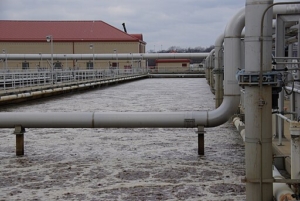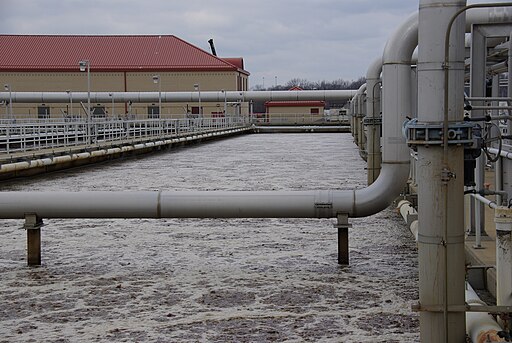Rarely does Congress pass a bill that allocates $50 billion to cities and counties to support water infrastructure projects. But that happened when the Bipartisan Infrastructure Law was passed by Congress several years ago. That funding was made available because of the critical need to protect and expand water infrastructure throughout America. As of May 2024, nearly half of the funding, $25 billion to be exact, is still available to support upcoming water projects. A recent announcement stated that $11.5 billion in funding will be awarded in 2024. The projects to expand and improve water systems will result in high demand for contractors throughout America for at least another two years. Even before the 2024 funding begins to flow, numerous contracting opportunities will open for bidding very soon.
Edmond, Oklahoma has been growing steadily over the past two decades, and as it has grown, so has the need for more water. The city’s primary water source is Arcadia Lake, constructed in 1986 by the U.S. Army Corps of Engineers. This body of water also serves as flood control for the Deep Fork River Basin and provides 4 billion gallons of water yearly to the Edmond Water Treatment Plant.
The current intake structure that draws and delivers raw lake water to the treatment plant has reached its limits and can no longer deliver enough water to support the growing city. The repair effort will provide a new $20 million intake structure. The project will be implemented in separate phases, and work will first focus on construction related to the waterline. City officials must wait for regulatory approval to proceed with phase 2, which will make improvements to the electrical infrastructure, the addition of generators, construction of a new high-lift pump station, installation of large water storage tanks along with granular activated carbon filters and a new backwash basin/pump station. Solicitation documents will be issued in 2025.
In New York, Saratoga County, a $265 million wastewater treatment plant project will soon be launched. Project components will include the construction of new aeration tanks, modifications to existing tanks, the installation of new diffusers and blowers, and the construction of a chemical feed facility. These upgrades will ensure the plant’s compliance with current environmental standards and significantly reduce ammonia levels currently being discharged. The emissions threaten the region’s local water ecosystems. Construction will begin in 2025.

Photo courtesy of Kristian Bjornard.
The Birmingham Water Works Board in Alabama secured a $171 million loan from the federal government to upgrade the city’s drinking water systems. The funding will replace aging water mains and lead service lines that have suffered leaks and breaks, thereby creating frequent service disruptions. The improvements are necessary to ensure a reliable water supply for 770,000 residents who depend on the Birmingham system.
Project components will include the replacement of 30 miles of water mains and numerous lead service lines. The upgrades will significantly reduce the occurrence of water main breaks, which have occurred more than 250 annually in past years. Water quality will also be enhanced. Construction on this effort is slated for 2025.
City officials in Silver Lake, Minnesota will oversee a dam modification project with a projected cost of $23 million. The work will be designed to revitalize the lake’s ecosystem and upgrade the region’s critical water infrastructure. Project components will include sediment removal, installation of storm mains and significant dam modification work. Additionally, the work will upgrade the city’s aging water and sewer systems to ensure long-term sustainability. Improved water flow management and enhanced stormwater drainage systems are needed to prevent localized flooding and maintain water quality. New trail connections and the construction of a pedestrian bridge will also be included in the project, increasing accessibility and recreational options around Silver Lake. Surveys and design work will likely continue through 2025, and contractors will begin work in 2026.
Following significant flooding in 2021, city officials in Grosse Pointe, Michigan, had the stormwater system evaluated, and the assessment reported that a major overhaul was needed. A large project to reroute much of the city’s stormwater to the nearby lake is being designed to mitigate the risk of future flooding. Because of the increased intensity and duration of storms, the existing system cannot handle the increased flow volumes forced through the pump station. A partially combined sewer system currently collects stormwater and sewage in the same pipe for treatment. During heavy rain, stormwater enters faster than it can drain, causing backups and roadway flooding.
The upcoming project has a projected $29 million cost estimate, but a $21 million federal funding grant has been awarded to support the effort. The stormwater project will separate the storm sewer system, and when that is completed, the sewer system will send water directly into the lake. The reduced water flowing into the pump station will alleviate basement backups throughout the city. City officials have announced that bidding for construction services will occur in early 2025 and work will also begin in 2025.
A large water infrastructure project in North Central Montana will play a pivotal role in ensuring reliable access to clean water for both Tribal and non-Tribal communities in the state. A $146 million initiative with federal funding support will soon be launched. It will include work on current water delivery pipelines and the installation of new additional pipelines. The effort will address immediate water needs and the long-term sustainability of the region’s entire infrastructure. The project’s total cost includes the construction of pipeline segments to tribal states as well as other parts of the area, including the town of Chester. Currently in the planning stage, this effort will offer contracting opportunities as soon as the design work is completed.
Critical water infrastructure projects require professional services, engineering and design work, construction, technology and equipment. Over the next several years, these types of contracting opportunities will be available in almost every part of the country.







